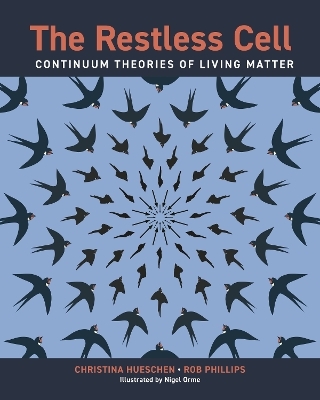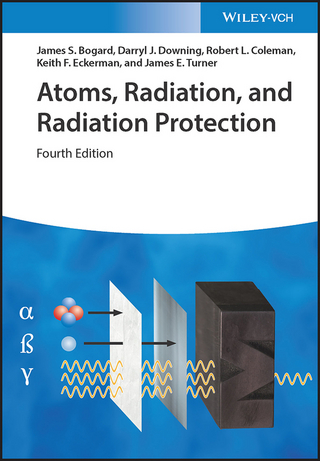
The Restless Cell
Continuum Theories of Living Matter
Seiten
2024
Princeton University Press (Verlag)
978-0-691-23636-0 (ISBN)
Princeton University Press (Verlag)
978-0-691-23636-0 (ISBN)
An essential introduction to the physics of active matter and its application to questions in biology
In recent decades, the theory of active matter has emerged as a powerful tool for exploring the differences between living and nonliving states of matter. The Restless Cell provides a self-contained, quantitative description of how the continuum theory of matter has been generalized to account for the complex and sometimes counterintuitive behaviors of living materials.
Christina Hueschen and Rob Phillips begin by illustrating how classical field theory has been used by physicists to describe the transport of matter by diffusion, the elastic deformations of solids, and the flow of fluids. Drawing on physical insights from the study of diffusion, they introduce readers to the continuum theory protocol—a step-by-step framework for developing equations that describe matter as a continuum—and show how these methods and concepts can be generalized to the study of living, energy-consuming matter. Hueschen and Phillips then present a range of engaging biological case studies across scales, such as the symmetry breaking that occurs in developing embryos, the perpetual flows that take place in giant algal cells, and the herding of wildebeest on the plains of the Serengeti.
An essential resource for students and researchers in biological physics and quantitative biology, The Restless Cell gives complete derivations of all calculations and features illustrations by Nigel Orme that seamlessly bridge conceptual models and continuum descriptions of living matter.
In recent decades, the theory of active matter has emerged as a powerful tool for exploring the differences between living and nonliving states of matter. The Restless Cell provides a self-contained, quantitative description of how the continuum theory of matter has been generalized to account for the complex and sometimes counterintuitive behaviors of living materials.
Christina Hueschen and Rob Phillips begin by illustrating how classical field theory has been used by physicists to describe the transport of matter by diffusion, the elastic deformations of solids, and the flow of fluids. Drawing on physical insights from the study of diffusion, they introduce readers to the continuum theory protocol—a step-by-step framework for developing equations that describe matter as a continuum—and show how these methods and concepts can be generalized to the study of living, energy-consuming matter. Hueschen and Phillips then present a range of engaging biological case studies across scales, such as the symmetry breaking that occurs in developing embryos, the perpetual flows that take place in giant algal cells, and the herding of wildebeest on the plains of the Serengeti.
An essential resource for students and researchers in biological physics and quantitative biology, The Restless Cell gives complete derivations of all calculations and features illustrations by Nigel Orme that seamlessly bridge conceptual models and continuum descriptions of living matter.
Christina Hueschen is assistant professor of cell and developmental biology at the University of California, San Diego. Rob Phillips is the Fred and Nancy Morris Professor of Biophysics, Biology, and Physics at the California Institute of Technology. His books include The Molecular Switch (Princeton) and (with Ron Milo) Cell Biology by the Numbers.
| Erscheinungsdatum | 14.09.2024 |
|---|---|
| Zusatzinfo | 243 color illus. |
| Verlagsort | New Jersey |
| Sprache | englisch |
| Maße | 203 x 254 mm |
| Themenwelt | Naturwissenschaften ► Biologie |
| Naturwissenschaften ► Physik / Astronomie ► Angewandte Physik | |
| Naturwissenschaften ► Physik / Astronomie ► Strömungsmechanik | |
| ISBN-10 | 0-691-23636-4 / 0691236364 |
| ISBN-13 | 978-0-691-23636-0 / 9780691236360 |
| Zustand | Neuware |
| Haben Sie eine Frage zum Produkt? |
Mehr entdecken
aus dem Bereich
aus dem Bereich


